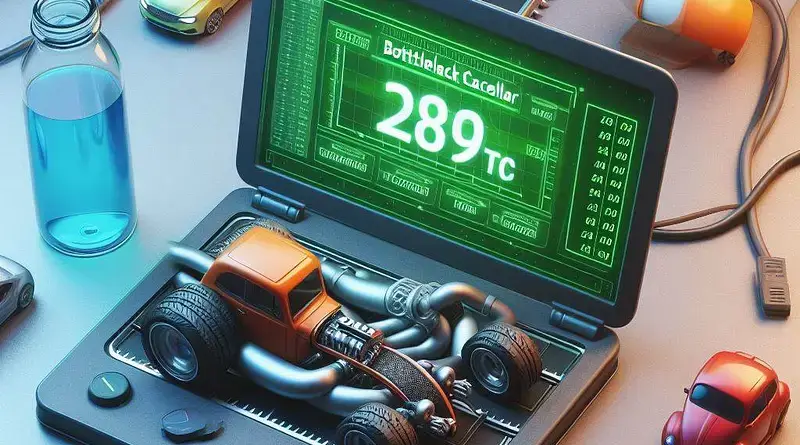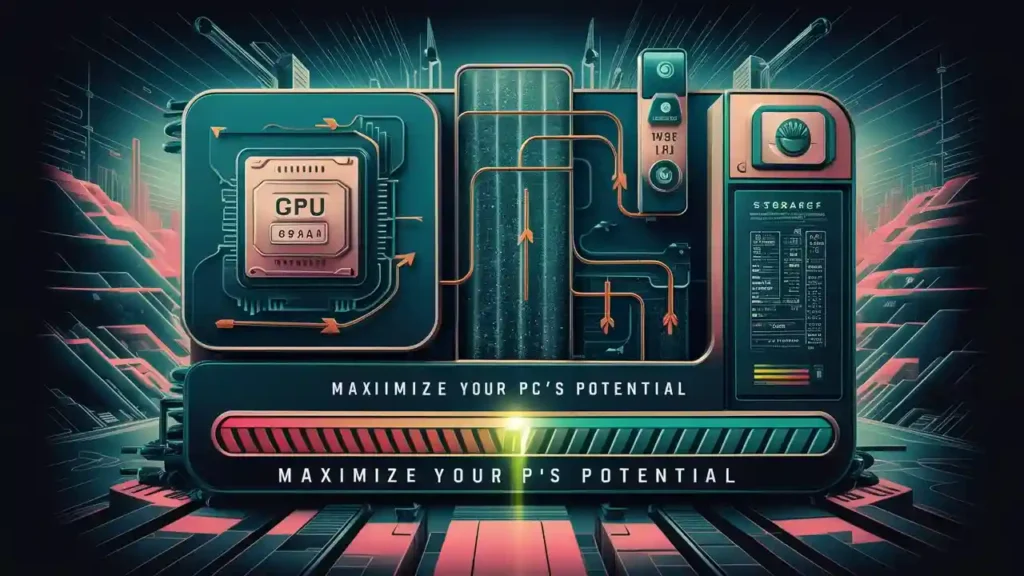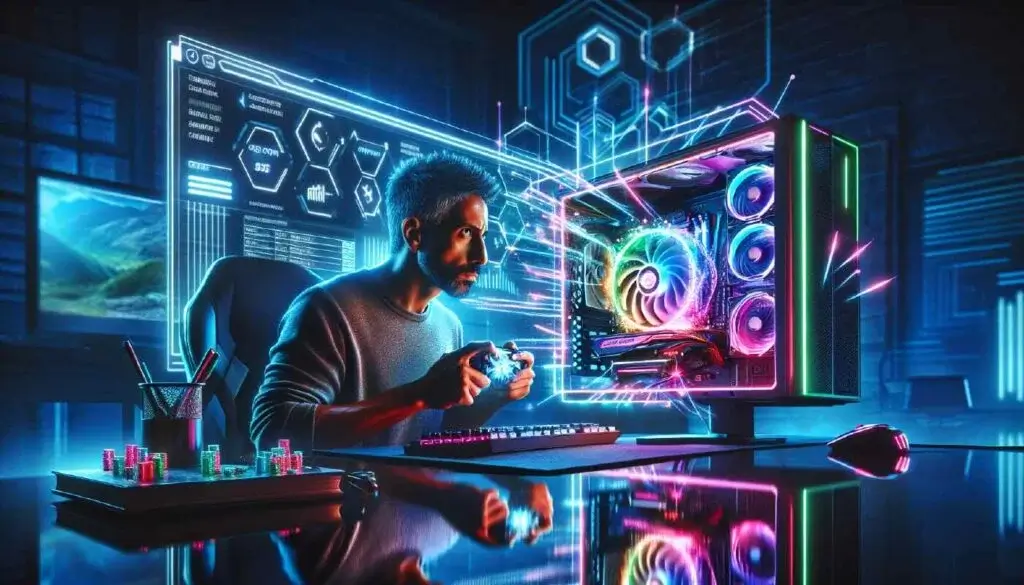Building or upgrading a PC can feel like solving a puzzle, especially when it comes to optimizing your computer’s performance. One of the key aspects to achieving peak efficiency is understanding and mitigating bottlenecks. A bottleneck in computing occurs when one component limits the performance of other components. But how do you figure out where the bottlenecks are in your system? That’s where a bottleneck calculator comes into play.
Whether you’re an avid gamer, a content creator, or just a tech enthusiast, knowing how bottlenecks affect your computer is essential for optimizing performance. This guide will take you through everything you need to know about bottleneck calculators, how to use them, and how to address bottleneck issues in your PC.
What Is a Bottleneck Calculator?
A bottleneck calculator is a tool designed to help you determine whether any specific component in your PC is limiting overall performance. It works by analyzing the relationship between different parts of your system, such as the CPU, GPU, RAM, and storage. This analysis can show you which component is weaker or underperforming compared to others, potentially restricting your PC’s full potential.
Bottleneck calculators can be particularly useful for gamers and creators who want to ensure their hardware can handle intensive tasks like high-resolution gaming or video rendering without one component slowing everything down.
How Do Bottlenecks Occur in a PC?
Bottlenecks in a PC are typically related to mismatches between components. For example, if you pair a high-end graphics card (GPU) with a low-performance processor (CPU), the CPU may not be able to keep up with the demands of the GPU. This results in a “CPU bottleneck,” where the graphics card could technically perform better, but it’s held back by the CPU’s inability to process data fast enough.
CPU vs. GPU Bottleneck Explained
- CPU Bottleneck: Occurs when the CPU can’t keep up with the GPU, slowing down the overall system performance.
- GPU Bottleneck: Happens when the GPU is not powerful enough to handle the tasks the CPU is sending its way.
RAM and Storage-Related Bottlenecks
- RAM Bottleneck: If you don’t have enough RAM, your system will struggle to multitask, leading to stutters and slowdowns, especially in high-memory usage scenarios.
- Storage Bottleneck: Using an older hard drive (HDD) instead of a faster solid-state drive (SSD) can cause delays in loading programs or booting the operating system.
How Software Contributes to Bottlenecks
Even if your hardware is well-balanced, poorly optimized software or driver issues can introduce bottlenecks. For example, a video game might not be optimized to use multiple CPU cores, which leads to lower performance, even with a capable processor.
How a Bottleneck Affects Your PC’s Performance
Bottlenecks can severely impact your system’s ability to perform. In gaming, for example, a CPU bottleneck can result in lower frame rates, stuttering, or inconsistent performance, even if you have a powerful GPU. In productivity tasks like video rendering or multitasking, bottlenecks can lead to longer wait times and reduced overall efficiency.
Real-World Examples of Performance Drops
Imagine you have a high-end GPU like the NVIDIA RTX 4080, but your CPU is several generations old, such as an Intel Core i5-6400. You might expect top-tier gaming performance, but instead, you experience frame rate dips and sluggish gameplay because the CPU cannot process data quickly enough to match the GPU’s output.

How to Use a Bottleneck Calculator
Using a bottleneck calculator is straightforward. Most online tools are free and easy to access. Here’s a step-by-step guide to help you:
- Visit a Bottleneck Calculator Website: Tools like PC-Build’s Bottleneck Calculator are popular.
- Enter Your System’s Specs: Input details about your CPU, GPU, RAM, and storage. Some calculators allow you to input resolutions and frame rates.
- Run the Calculation: The calculator will analyze how well your components work together.
- Interpret the Results: The tool will give you a percentage or breakdown of bottlenecks, highlighting any weak links in your build.
Input Parameters Needed
When using a bottleneck calculator, make sure to input accurate specs for:
- CPU Model: Processor make and model.
- GPU Model: Graphics card make and model.
- RAM Size: Amount of RAM installed in your system.
- Resolution: Display resolution (1080p, 1440p, 4K, etc.).
- Game/Software Preference: In some cases, you may input specific games or software to get more tailored results.
Popular Bottleneck Calculators to Try
Here are some of the most commonly used bottleneck calculators:
PC-Build’s Bottleneck Calculator
This is one of the most popular tools available. PC-Build allows you to input your system’s components and calculates potential bottlenecks.
CPUAgent’s Bottleneck Calculator
Another excellent tool that not only helps identify bottlenecks but also provides detailed benchmarks for different CPU-GPU combinations.
Understanding Bottleneck Percentages
When you use a bottleneck calculator, the results are typically displayed as percentages. Here’s how to interpret them:
- 0-10%: A very balanced system with minimal bottlenecking.
- 10-30%: Some bottlenecking, but this is usually acceptable for most tasks and games.
- Above 30%: Significant bottlenecking that could affect overall performance. This usually indicates that a key component needs to be upgraded.
How to Reduce Bottlenecks in Your PC
Reducing bottlenecks requires ensuring that your components are balanced. Here’s how to do it:
Upgrading Your CPU or GPU
- Upgrade the CPU: If you’re experiencing a CPU bottleneck, consider upgrading to a faster, multi-core processor.
- Upgrade the GPU: If your GPU is holding you back, upgrading to a more powerful graphics card will alleviate the problem.
Balancing Components for Better Synergy
Always aim for synergy between your components. Don’t pair a high-end GPU with a low-end CPU or vice versa. Ensure that the performance levels of your CPU and GPU are similar to avoid imbalances.
Software Optimizations and Tweaks
Sometimes, a simple software tweak or driver update can reduce bottlenecks. Ensure that your system’s drivers are up to date, and consider overclocking either your CPU or GPU to boost performance.
CPU Bottleneck: Causes and Fixes
A CPU bottleneck happens when your processor is not fast enough to handle the tasks at hand, especially in CPU-intensive applications like simulation games, video editing, or streaming.
Causes of CPU Bottlenecks
- Old CPU: Older processors with fewer cores and lower clock speeds can be outmatched by modern GPUs.
- Low Thread Count: Games and software optimized for multi-core use may perform poorly on CPUs with fewer threads.
How to Fix CPU Bottlenecks
- Upgrade to a Newer CPU: Look for processors with more cores and higher clock speeds.
- Overclocking: If upgrading isn’t an option, overclocking your CPU can provide a temporary solution.
GPU Bottleneck: Causes and Fixes
A GPU bottleneck is less common than a CPU bottleneck, but it can still occur in systems that don’t have enough graphical processing power to handle demanding tasks.
Causes of GPU Bottlenecks
- Old or Underpowered GPU: If your graphics card is outdated, it will struggle to render high-resolution textures, shadows, and other details.
- High-Resolution Gaming: Playing games at 4K or even 1440p can put a strain on older GPUs.
How to Fix GPU Bottlenecks
- Upgrade to a Newer GPU: Look for a graphics card that is suited to your gaming or content creation needs.
- Lower Game Settings: Reducing the resolution or graphical settings in games can alleviate GPU bottlenecks.
Other Types of Bottlenecks
RAM Bottleneck: Symptoms and Solutions
Insufficient RAM can cause slowdowns in multitasking or running memory-hungry applications. Adding more RAM or switching to faster RAM can often solve this issue.
Storage Bottlenecks: Slow SSD/HDD and How to Improve
If your system takes too long to load applications or boot, your storage might be the issue. Upgrading from an HDD to an SSD or using a faster NVMe drive can significantly improve system responsiveness.
Balancing Your PC for Gaming
Creating a balanced gaming rig involves carefully matching your components. The CPU, GPU, and RAM should be chosen based on the resolution and frame rate you want to achieve. Pairing a mid-range CPU with a mid-range GPU is often the best way to avoid bottlenecks.
Matching the Right CPU and GPU
For example, if you’re building a system for 1080p gaming, a setup like an Intel i5-13600K paired with an NVIDIA RTX 4070 would be well-balanced.

Bottlenecking in Content Creation Workflows
Bottlenecks don’t just affect gaming; they also play a significant role in tasks like video editing, 3D rendering, and photo editing. A slow CPU or insufficient RAM can cause long render times and slow project exports.
Solutions for Smoother Creative Workflows
Upgrading your CPU and adding more RAM can make a big difference when working with large media files. Additionally, faster storage solutions like NVMe drives can speed up file transfers and loading times.
Upgrading Your PC Without Bottlenecking
When upgrading your PC, it’s important to consider how each component interacts with the others. For example, if you upgrade your GPU but keep an older CPU, you may not see much improvement in performance.
Cost-Effective Solutions for Component Upgrades
Consider upgrading your CPU, GPU, and RAM in stages to avoid overspending all at once. For budget-conscious builders, mid-range components often offer the best price-to-performance ratio without creating major bottlenecks.
Conclusion
Understanding and addressing bottlenecks is crucial for getting the most out of your PC. Whether you’re gaming or creating content, using a bottleneck calculator can help you identify potential performance issues before they become a major problem. By carefully selecting and balancing your components, you can ensure your PC operates smoothly and efficiently.
